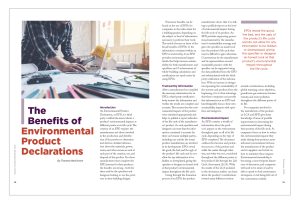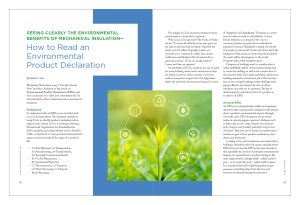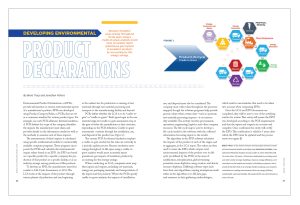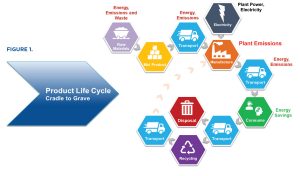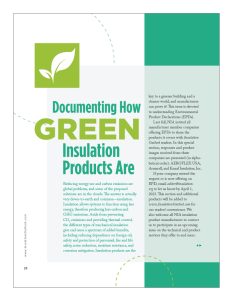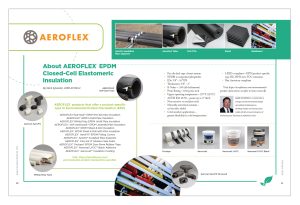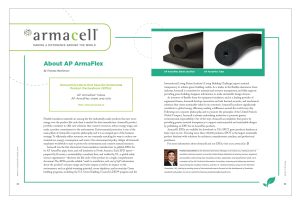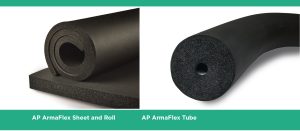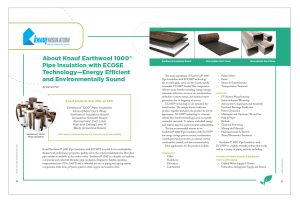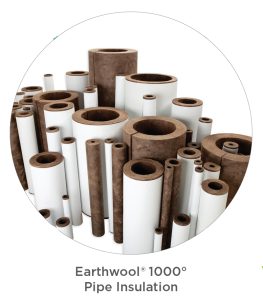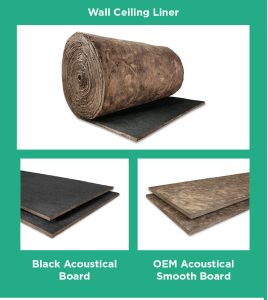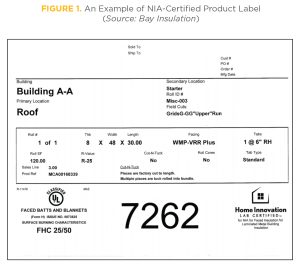NIA is committed to being the insulation industry’s leader in education, offering access to instructive online tools and a variety of learning programs including professional development and certification-level courses, and live and pre-recorded webinars. NIA’s goals are to provide learning resources for every level of insulation professional and to increase the understanding of proper insulation system design and maintenance among our members, the construction industry, and insulation end users.
NIA is excited to continue to launch new programs and resources to help users learn how to properly design, specify, install, and maintain insulation, leading to a host of benefits for their facilities.
NIA’s Newest 2021 Learning Programs and Resources!
Insulation Estimator’s Handbook
In its first update since 1998, this resource is an essential tool for any estimator. The classic NIA reference guide has gotten a complete update, which includes brand new graphics and easier-to-read charts. It is available in both print and digital formats.
Known throughout the industry for providing the data needed for almost every type of mechanical insulation estimate, this handbook contains valuable technical information for estimating insulation, as well as formulas and conversions, and information on insulation accessories and technical variables of an insulation project.
Level of Training: Intermediate
Learn More: www.programs.insulation.org/store/insulation-estimators-handbook/81
Understanding the Submittal Process
This course is designed to benefit multiple audience segments involved in the design,
application, and use of mechanical insulation in both the commercial/building and industrial markets for new construction and maintenance. Students will learn how to identify the type and scope of submittal requirements, the components and importance of the submittal package, and the purpose of the submittal process. Students will review a submittal example and be given a submittal log template to use at their businesses. Also, as part of the course, each student receives a full-color printed course manual.
Level of Training: Intermediate
Learn More: www.insulation.org/training-tools/submittals
Understanding Specifications
The course is designed to benefit multiple audience segments involved in the design,
application, and use of mechanical insulation in both the commercial/building and
industrial markets for new construction and maintenance. Course participants will learn
how a specification is developed; how to identify challenges and opportunities created
by specifications; how codes, standards, regulations, and guidelines are intertwined in
specifications; how conflicting information in specifications may be problematic; how to understand and overcome the consequences of a “bad” specification; and how increased
knowledge of mechanical insulation and insulation inspections can improve specifications.
Level of Training: Intermediate
Learn More: www.insulation.org/training-tools/specifications
Mechanical Insulation Basics
For anyone looking for basic insulation education, the mechanical insulation online training series is an excellent place to start. Available anytime, it contains five different modules, ranging from 15 to 35 minutes in length. The content of each module is self-paced and fully outlined, so your team can choose how to pair modules with your company’s existing training program. In 2 hours, new hires and office support staff will have a great foundation to better understand the industry so you can explain your company’s role within it.
• The principles of understanding energy;
• What the various types of insulation are;
• How insulation works;
• How to develop an insulation system design or specify materials;
• How the insulation calculators work, and how they are designed for the unique needs of insulation contractors and engineers; and
• How overseeing maintenance can keep a facility running smoothly.
Formerly available on the National Institute of Building Sciences’ website and known as the Mechanical Insulation Education & Awareness E-Learning Series or E‑Learning Modules, this training resource is being updated and will be available at www.insulation.org/basics. The series provides data on the science behind insulation,
helps specifiers and system designers construct insulation systems, explains design considerations, and offers practical data and case studies outlining potential energy savings. The course is a prerequisite for the Understanding Mechanical Insulation learning program, and a certificate and professional development hours (PDHs) are available
from NIA upon completion.
Level of Training: Beginner
Learn More: www.insulation.org/basics
NIA’s Mechanical Insulation Design Guide
Everyone has questions on how to design an insulation system because every application is unique. The Design Guide is one of the most comprehensive mechanical insulation resources on the web for design, project estimation, and/or product specifications. It answers the insulation designer’s basic questions—what, when, why, where, and how—and is useful for both beginners and experienced contractors, engineers, specifiers, and other professionals in the construction, design, specification, maintenance, and management fields. This advanced, detailed tool walks users through the steps to build an insulation system correctly, providing everything you need to know about the design, selection, specification, installation, and maintenance of mechanical insulation.
Level of Training: Beginner to Intermediate
Learn More: www.insulation.org/designguide
NIA’s Insulation Simple Calculators
These eight free calculators are uniquely designed to make common mechanical insulation calculations straightforward for users of all levels. The tools make it easy to discover proper insulation thickness, financial and energy savings, and the ideal insulation design.
• Mechanical Insulation Financial Calculator: Determines the simple payback period, the annualized rate of return, and the net present value for an insulation project.
• Personnel Protection Calculator for Horizontal Piping: Estimates maximum contact exposure times on the outer surface of a horizontal pipe with and without an insulation system to help avoid the potential for contact burn injuries.
• Condensation Control Calculator for Horizontal Pipe: Estimates the thickness of insulation required to prevent condensation on the outer surface of an insulation system.
• Energy Calculator for Equipment (Vertical Flat Surfaces): Estimates the performance of an insulated vertical flat surface given the operating temperature, ambient temperature, and other system details.
• Energy Calculator for Horizontal Piping: Estimates the performance of an insulated horizontal piping system given the operating temperature, ambient temperature, and other system details.
• Estimate Time to Freezing for Water in an Insulated Pipe Calculator: Estimates the time for a long, water-filled pipe or tube (with no flow) to reach the freezing temperature.
• Temperature Drop Calculator for Air Ducts: Estimates the temperature drop (or rise) of air flowing in a duct.
• Temperature Drop Calculator for Hydronic Piping: Estimates the temperature drop (or rise) of water flowing in a pipe.
Level of Training: Beginner to Expert
Learn More: www.insulation.org/calculators
More Courses for Expanded Skills and Services
NIA offers five distinct learning programs to fit the needs of industry members at various career levels. In addition to our newest offerings, Understanding Specifications and Understanding the Submittal Process, described on page 27, we have Understanding Mechanical Insulation, Thermal Insulation Inspector Certification™ Program, and Insulation Energy Appraisal Program™ (IEAP).
Understanding Mechanical Insulation
Formerly called Introduction to Mechanical Insulation, and Part 1 of the Thermal Insulation Inspector Certification Program, this material is now available as a stand-alone course for industry members who have some experience in the insulation industry to provide more knowledge about mechanical insulation, the industry, and its products.
The course includes a review of the insulation industry market segments; the need for and importance of inspection; the purpose of mechanical insulation systems, and why that is important to the inspection process; primary insulation materials and protective coverings; the importance of Safety Data Sheets; and codes, standards, regulations, and guidelines, and how they are intertwined.
Level of Training: Intermediate
Learn More: www.insulation.org/training-tools/understandingmi
Thermal Insulation Inspector Certification Program
A 4-day, 2-part course educates participants on how to inspect and verify that the materials and the insulation system have been installed in accordance with the mechanical insulation specifications. This course is designed for experienced participants and can help companies extend their business offerings to include inspections. It is helpful for anyone responsible for contracts, maintenance, business development, quality assurance/quality control, project oversight, safety, inspections, estimating, management, product
development, mechanical insulation system design, or specification development.
To become certified, participants must complete both parts of the course (the certification-level course and Understanding Mechanical Insulation) and pass the associated exams.
Level of Training: Advanced
Learn More: www.insulation.org/inspector
Insulation Energy Appraisal Program (IEAP)
Focused on energy, insulation, and a project’s return on investment, this 2-day course teaches participants how to determine the optimal insulation thickness and corresponding energy and dollar savings for a project. This refreshed course is designed for participants who have industry experience and companies that want to expand their business capabilities by adding insulation appraisals to show insulation’s return on investment to their customers. Participants will learn how to conduct a facility walk-through, understand the tools necessary to complete the appraisal, and how to create a final report for customers.
Level of Training: Advanced
Learn More: www.insulation.org/training-tools/energy-appraiser-certification
Classic Resources
The Fundamentals of Insulation Program
This training program was developed jointly by NIA’s Associates and Distributors/Fabricators Committees to teach new employees about insulation and how to optimize their insulation industry-specific customer service skills. The program contains a DVD and workbook split into 10 modules of approximately 3 to 4 minutes each that cover Heat Flow Basics; Btu; Values (Ks, Rs, and Cs); Insulation Selection Criteria; Cold and Colder Environments; Normal to Hot Environments; Super Hot Environments; Protective Coverings and Finishes; Specifications and Codes; and Selling Tools. These learning tools give your team information they can apply in insulation sales situations, making for a better bottom line.
Level of Training: Beginner
Learn More: www.insulation.org/products
NIA’s Insulation Sampler
Can you identify the most common types of insulation? Are your employees or clients familiar with insulation materials beyond what your company works with most frequently? This learning tool provides samples of 20 generic mechanical insulation product types and accessories for your staff or clients to see firsthand. The small, portable sample boxes are designed for ease of use, with an illustrative product schematic guide that denotes the product type. Each sample has its own compartment space to remain organized and undamaged within the sample box. In developing this kit, NIA aimed to represent many major mechanical insulation types. The kit is an excellent visual tool for your internal education and resource library, as well as for external sales discussions and presentations.
Level of Training: Beginner
Learn More: www.insulation.org/products
Mechanical Insulation Installation Video Series
To help explain how to install insulation, these videos (available in English and Spanish on the Vimeo site) are a great supplement to your company’s training program. Each one provides a general product overview, safety information, and how-to guide for installing mechanical insulation for various applications. In addition, each video incorporates consensus recommendations from the sponsoring manufacturers, and the applications demonstrated are completed by experienced field mechanics on piping and equipment mockups representing project applications. The videos are a great industry resource to supplement existing craft training programs, use as educational programs for new or existing sales or insulation service employees, and for indirect users to obtain an overview of application practices for the respective insulation materials.
Level of Training: Beginner to Intermediate
Learn More: www.vimeo.com/niainfo
NIA’s Online Training Portal at Vimeo
In 2020, NIA held 20 webinars viewed by more than 3,000 professionals, and these resources are now available on demand. You can stream NIA’s business management or educational offerings, which include how insulation contractors have responded
to COVID-19; sales strategies; long-term business planning; and health and safety topics like illness prevention on the jobsite, and injury reporting and recordkeeping guidance. Videos also are available about the Design Guide and insulation calculators that can help users with their insulation installation questions. Additionally, there are videos from past NIA Conventions and messages from NIA leadership.
Level of Training: Beginner to Expert
Learn More: www.vimeo.com/NIAinfo
Insulation Outlook Magazine Article Archives
Did you miss an issue, or are you trying to explain a design concept you read about? As one of the only educational resources available for our unique industry, NIA maintains a free online archive of almost all past educational and technical articles; safety columns; and insulation product guides, listed by application type. Each month’s issue of Insulation Outlook magazine is dedicated to providing useful information for the insulation industry.
Level of Training: Beginner to Expert
Learn More: Visit www.InsulationOutlook.com to start incorporating decades of research into your training programs or project research.
NIA Is Your One-Stop Shop for Insulation Knowledge
NIA is committed to helping insulation users expand their knowledge and learn more about the benefits insulation can offer their systems and bottom line. Insulation is a proven means for saving energy, reducing greenhouse gas emissions, increasing process productivity, providing a safer and more productive work environment, controlling condensation (thereby preventing mold growth and corrosion), supporting sustainable design technology, and realizing a host of other benefits. NIA resources can expand your team’s understanding of all the benefits insulation offers, going through the design process to ensure insulation is properly installed and maintained in your systems, leading to tremendous financial and energy savings, increased safety, and lower environmental impact. Our website offers updates on other NIA programs, events, and insulation-related activities. Bookmark www.Insulation.org as your resource for insulation information.
We invite you to connect with NIA through social media and stay up to date with all of NIA’s learning programs, resources, and products.
• LinkedIn: www.linkedin.com/company/NIAinfo
• Vimeo: Vimeo.com/NIAinfo
• Twitter: NIAinfo (twitter.com/NIAInfo) and InsulationInfo (twitter.com/InsulationInfo)
• Facebook: www.facebook.com/NIAinfo


